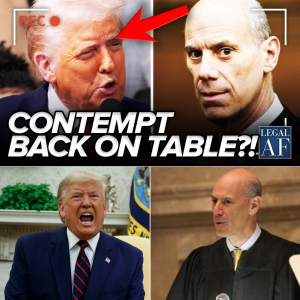A dramatic political thriller masquerading as real news swept across social media this week, claiming Senator John Neely Kennedy destroyed former Vice President Mike Pence’s 2028 presidential hopes with a single red folder and a 47-second televised takedown. According to the viral script, Kennedy exposed secret texts, dark-money transfers, jet-fuel expenses, and a sealed $12 million settlement — all of which supposedly obliterated Pence’s future in politics.
None of it happened.
Despite the breathless framing, no such broadcast exists, no red folder ever appeared, and no evidence supports the financial or legal claims circulating in millions of posts. Still, the narrative spread globally in record time, becoming another case study in how political fan-fiction can eclipse reality.

How the Red Folder Narrative Took Over the Internet
The story appeared first in viral text posts, short-form videos, and AI-generated imagery promising a political scandal “caught on live TV.” The script claimed:
-
Kennedy entered a studio holding a red file labeled “PENCE – THE PAPER TRAIL”
-
He read alleged January 6th texts involving the word “treason”
-
He cited $60 million in suspicious transfers
-
He referenced $18 million in private jet fuel to Israel “47 times”
-
He revealed a $12 million sealed Dominion Voting Systems settlement
-
He ended with the line: “Your political career just got certified — six feet under.”
The narrative even claimed Pence’s exploratory committee disbanded “in 11 minutes,” and the red folder was locked in a Senate vault.
No part of this story appears in congressional records, court filings, campaign disclosures, network logs, or C-SPAN archives. The timeline itself is impossible: no televised confrontation occurred, and no committee exists matching the description.
Yet for tens of millions of users, the story felt too dramatic to scroll past.
Why So Many People Fell for the Hoax
Digital analysts say the hoax used perfected social-media storytelling techniques to achieve virality:
1. A Cinematic Format
The post read like a movie trailer — a senator entering a studio, a dramatic prop, a fatal line, and a political “death certificate.” This style is engineered to bypass skepticism.
2. Use of Real Political Tensions
Pence’s evolving relationship with the GOP after January 6th has made him a common target of speculation, amplifying the believability of fabricated intrigue.
3. Specific, Invented Numbers
False stories often use precise figures — “47 flights,” “$12 million settlement,” “187 million posts in 90 minutes” — to create a false sense of authenticity.
4. AI-Generated Evidence
Many users shared deepfake images or edited “screenshots” resembling news broadcasts, giving the illusion of validation where none exists.
5. Outrage Incentives
Sensational claims drive faster engagement than fact-based reporting, rewarding the spread of misinformation through platform algorithms.
Breaking Down the Fiction vs. Reality
A review of publicly available records debunks each major element of the viral hoax:
-
There was no live TV event featuring Kennedy exposing Pence.
-
No red folder labeled “Pence – The Paper Trail” exists in Senate archives.
-
No January 6th text chain between Pence and Trump staffers contains the dialogue described.
-
There is no evidence of $60 million routed through Pence-linked entities.
-
No $18 million jet-fuel expense is listed in any known disclosure for Pence-affiliated organizations.
-
No settlement with Dominion Voting Systems exists involving Pence.
-
No federal committee disbanded “in 11 minutes.”
-
Senate vaults do not store fictional evidence files.
Every component of the so-called exposé is fabricated.
The Bigger Picture: Why These Hoaxes Are Increasing
Experts warn that political misinformation in 2025 is rapidly evolving into a form of interactive entertainment, blending:
-
Real public figures
-
Fictional documents
-
Invented scandals
-
Suspense-driven storytelling
-
AI-assisted images and “receipts”
This hybrid genre — political fan-fiction disguised as breaking news — spreads faster than fact-checking can counter it.
Three forces drive the trend:
1. Technology
Deepfakes, AI image generation, and hyper-realistic text tools make fake evidence look authentic.
2. Polarization
Many users share stories that fit their emotional expectations, regardless of accuracy.
3. Algorithmic Platforms
Social networks prioritize sensational content because it triggers high engagement.
The result is an environment where political myths can trend globally before a single journalist can debunk them.
Why Misinformation Like This Matters
Fabricated stories are not harmless entertainment. They can:
-
Mislead voters
-
Damage reputations
-
Inflame partisan hostility
-
Distract from real policy issues
-
Erode trust in democratic institutions
-
Create confusion about legitimate investigations
When fiction repeatedly masquerades as fact, it becomes harder for citizens to discern real governance from viral fantasy.
Conclusion: A Red Folder That Never Existed — and a Warning for the Digital Age
The viral “Kennedy vs. Pence” story may have captivated millions, but it belongs in the realm of digital myth-making, not journalism. No folder, no meltdown, no settlement, and no political assassination occurred.
As elections approach and misinformation tactics grow more sophisticated, media literacy remains the strongest defense against viral fiction disguised as news.





